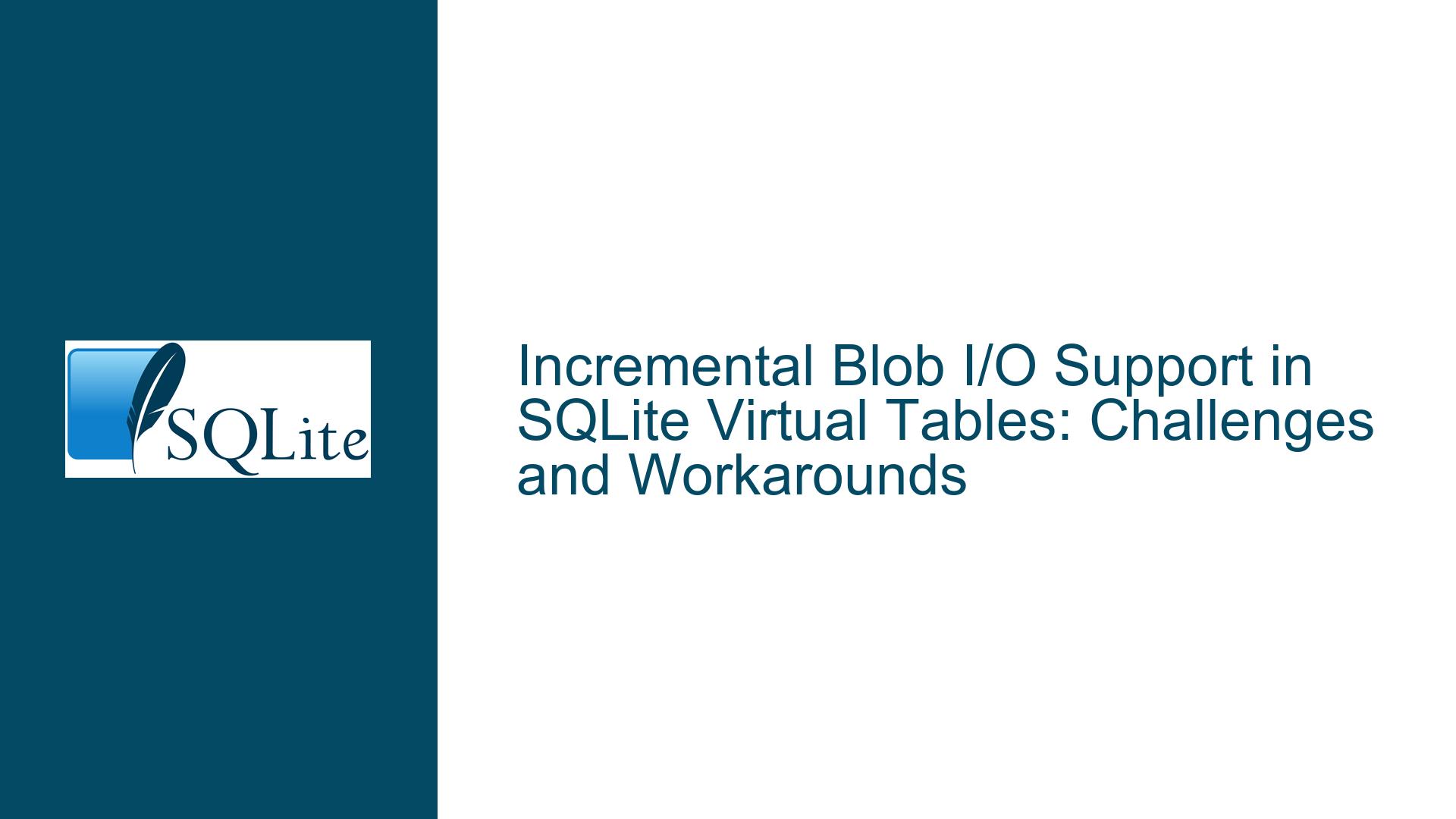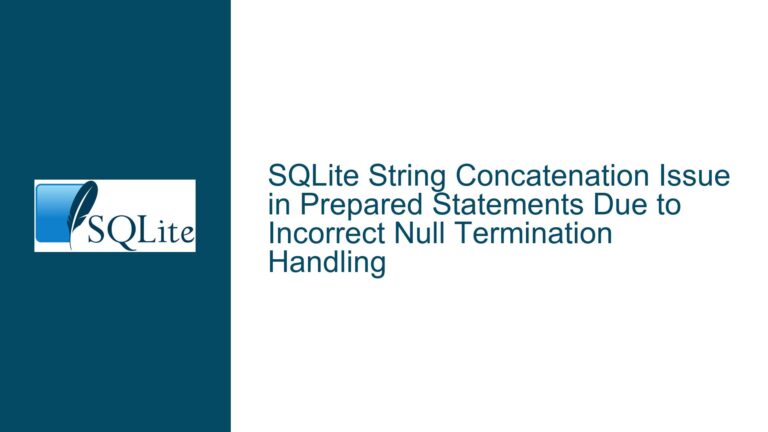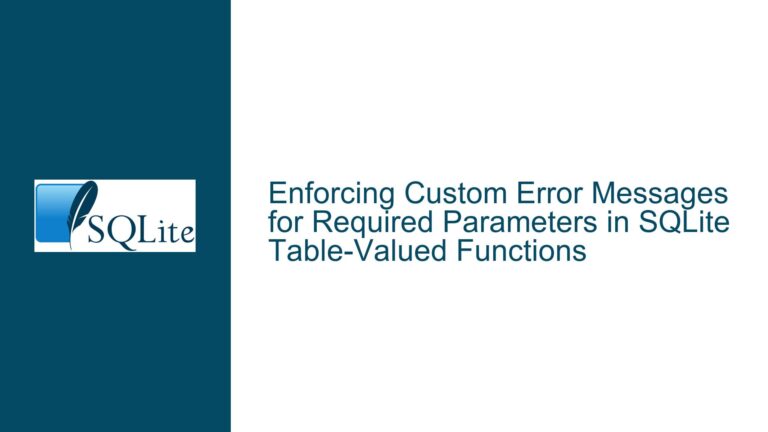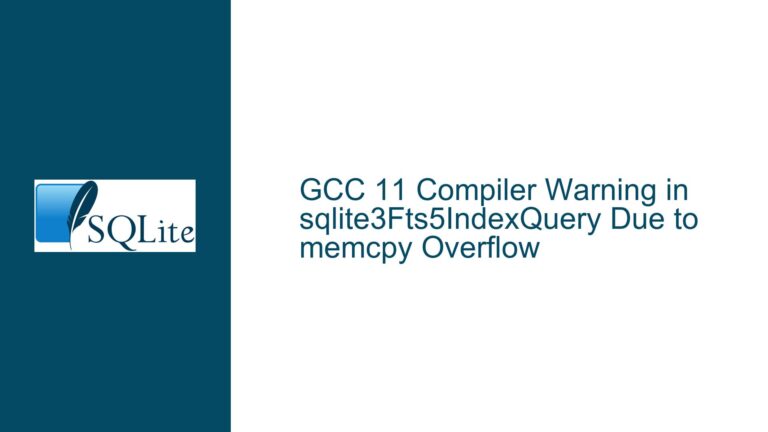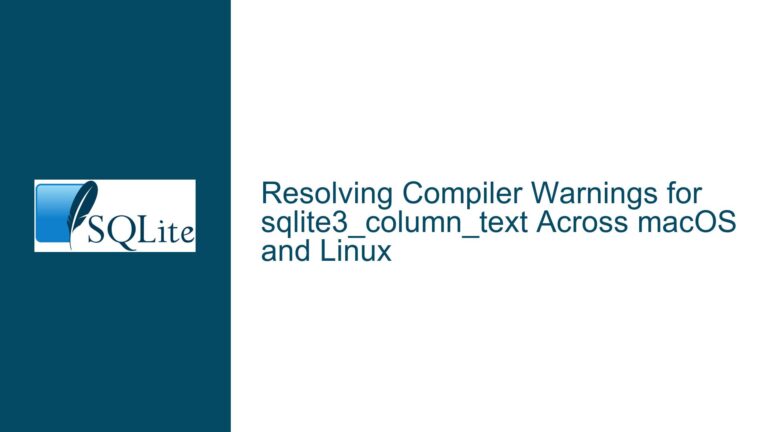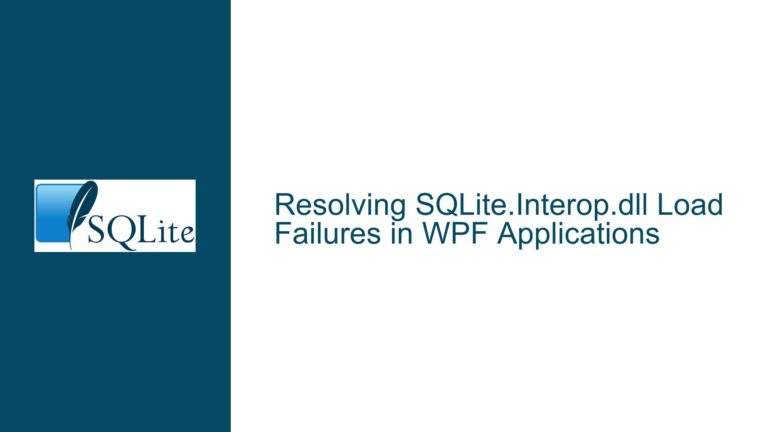Incremental Blob I/O Support in SQLite Virtual Tables: Challenges and Workarounds
Incremental Blob I/O and Virtual Tables: Understanding the Gap
SQLite’s incremental Blob I/O API provides a powerful mechanism for efficiently reading and writing large binary objects (BLOBs) in a database. This API allows applications to access BLOB data in chunks, which is particularly useful when dealing with large files or datasets that cannot fit into memory all at once. However, the documentation for the sqlite3_blob_open function does not explicitly address its compatibility with virtual tables. Virtual tables, on the other hand, are a flexible feature in SQLite that allows developers to create custom table implementations that can interface with external data sources or provide specialized behavior. The documentation for virtual tables does not mention any entry points for incremental Blob I/O, leading to ambiguity about whether this feature is supported.
The core issue here is the lack of clarity and support for incremental Blob I/O operations within virtual tables. Virtual tables are implemented using a set of callback functions defined in the sqlite3_module structure, which includes methods for querying, updating, and managing rows in the virtual table. However, there is no dedicated method for handling incremental Blob I/O, which means that virtual tables cannot natively support this feature without significant modifications or workarounds.
The absence of incremental Blob I/O support in virtual tables can be attributed to the architectural differences between standard tables and virtual tables. Standard tables in SQLite store data in a structured format on disk, and the incremental Blob I/O API interacts directly with this storage mechanism. Virtual tables, however, do not necessarily store data in the same way. They may pull data from external sources, generate it on the fly, or use custom storage formats. This flexibility makes it challenging to implement a generic incremental Blob I/O mechanism that works seamlessly across all virtual table implementations.
Architectural Constraints and Missing API Hooks
The primary reason incremental Blob I/O is not supported in virtual tables lies in the architectural constraints of the virtual table module. The sqlite3_module structure, which defines the interface for virtual tables, does not include methods for handling Blob I/O operations. This omission means that virtual table implementations cannot provide the necessary functionality to support incremental Blob I/O without extending the existing API.
One possible approach to adding incremental Blob I/O support would be to introduce new methods in the sqlite3_module structure, such as xBlobOpen, xBlobClose, xBlobRead, and xBlobWrite. These methods would allow virtual table implementations to define their own mechanisms for handling Blob data incrementally. For example, the xBlobOpen method could initialize a Blob handle, while xBlobRead and xBlobWrite would handle the actual data transfer. The xBlobClose method would clean up any resources associated with the Blob handle.
However, implementing these new methods would require significant changes to the SQLite core and could introduce compatibility issues with existing virtual table implementations. Additionally, virtual table authors would need to update their code to support the new methods, which could be a barrier to adoption. Another challenge is ensuring that the new methods are flexible enough to accommodate the diverse use cases of virtual tables, such as accessing remote data sources or generating data dynamically.
Another architectural constraint is the way virtual tables handle row identifiers (rowids). In standard tables, rowids are used to uniquely identify rows and are essential for incremental Blob I/O operations. However, virtual tables may use different mechanisms for identifying rows, which could complicate the implementation of incremental Blob I/O. For example, some virtual tables may not have a concept of rowids at all, or they may use composite keys or other custom identifiers. This variability makes it difficult to define a generic Blob I/O API that works across all virtual table implementations.
Implementing Workarounds and Future Enhancements
Given the current limitations, there are several workarounds that developers can use to achieve incremental Blob I/O-like functionality in virtual tables. One approach is to use a combination of virtual table methods and custom functions to emulate the behavior of incremental Blob I/O. For example, a virtual table could implement a custom xFilter method that retrieves Blob data in chunks and stores it in a buffer. The application could then use a custom SQL function to read or write data from the buffer incrementally.
Another workaround is to use a hybrid approach that combines virtual tables with standard tables. In this approach, the virtual table would store metadata or references to Blob data, while the actual Blob data would be stored in a standard table. The application could then use the incremental Blob I/O API to access the Blob data in the standard table. This approach leverages the strengths of both virtual and standard tables but requires careful management of the relationship between the two.
For future enhancements, the SQLite development team could consider extending the virtual table API to include support for incremental Blob I/O. This could involve adding new methods to the sqlite3_module structure, as discussed earlier, or introducing a new interface specifically for Blob I/O operations. The new interface could provide a standardized way for virtual tables to handle Blob data, while still allowing for flexibility in how the data is stored or accessed.
In addition to API changes, the documentation for virtual tables and incremental Blob I/O should be updated to provide clearer guidance on the limitations and workarounds. This would help developers understand the current capabilities of virtual tables and make informed decisions about how to implement Blob I/O functionality in their applications.
To summarize, the lack of incremental Blob I/O support in SQLite virtual tables is a significant limitation that stems from architectural constraints and missing API hooks. While there are workarounds available, they often require custom implementations and may not be as efficient or flexible as native support. Future enhancements to the virtual table API could address this gap and provide a more robust solution for handling Blob data in virtual tables. Until then, developers must carefully consider their options and choose the approach that best fits their use case.
